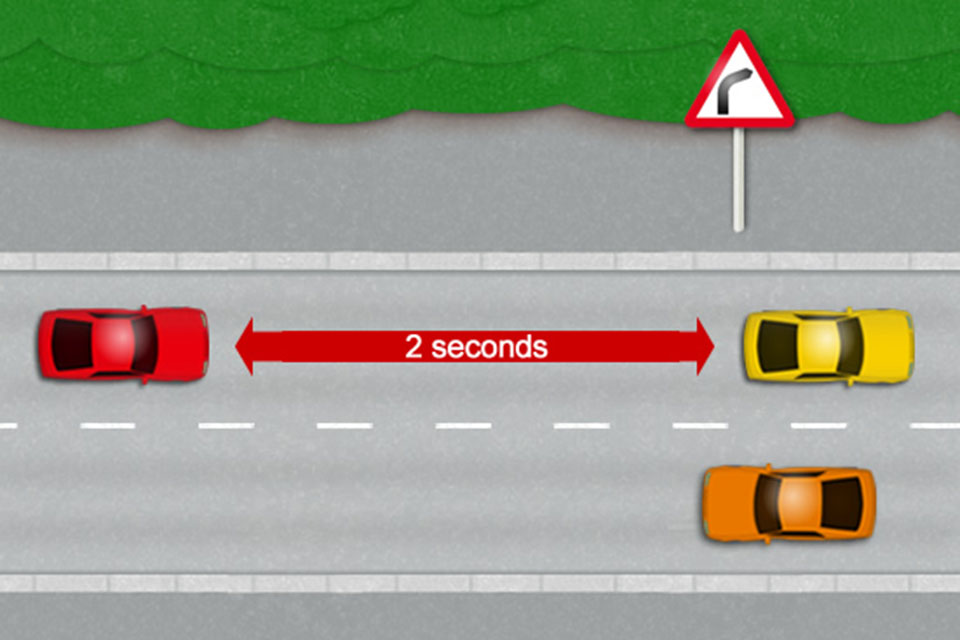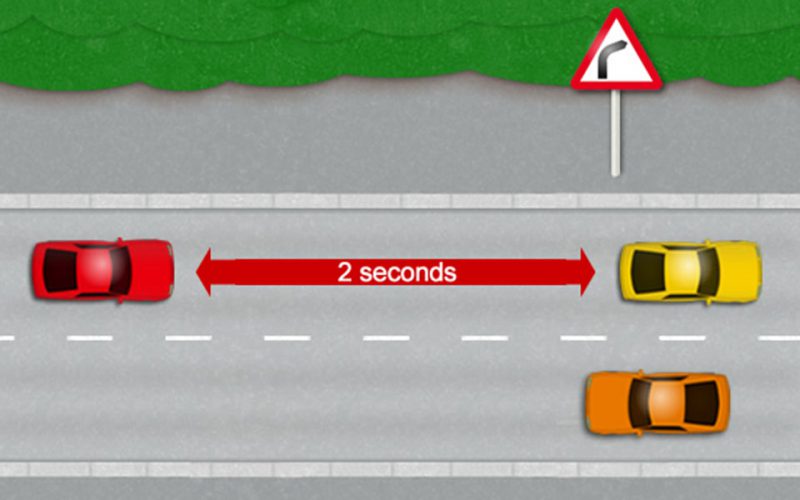Only a fool breaks the Two-second rule!
It’s always a good idea to keep a safe distance between your vehicle and the one in front while driving, but measuring that ‘safe distance’ is a problem which some drivers fail to realise.
In normal, good weather driving conditions, many drivers use the ‘Two-second rule’ to measure their safe distance and on wet roads during heavy rain or fog, many other drivers add on an extra second to this rule.
Measuring a ‘safe distance’ and keeping to that measured space allows a driver to react, slow down and stop in good time if needs be. Knowing your vehicles stopping distance is important. For example, travelling in a car from 50km/h to 100km/h the total braking distance of your car can increase from 15 meters t 60 meters. When you double the speed of your car you also multiply the total braking distance by four times.
How to use the ‘Two-Second’ rule
You are driving along a relatively straight road. To estimate the minimum and safe following distance, allow the car in front to pass a fixed object. This can be any fixed object such as a lamp, sign post, road sign etc.
At the point where the car in front passes your chosen fixed object, county to 2 seconds. If you find that your vehicle has reached the fixed point before you have reached 2 seconds, you need to increase your distance and try again at another fixed point ahead.

Here’s a Tip. When counting for the 2 second rule, count like: one-thousand-one, one thousand-two which will give you the two seconds you need for distance and fixed marking.
Remember, Only a Fool breaks the 2 second rule!

